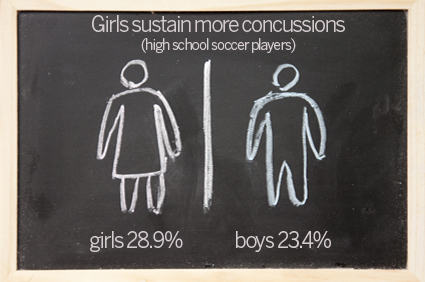
Fall’s a great time of the year – even though winter is right around the corner!
Soccer tryouts are over, kids are back in school and it’s nice to have some cool weather for the games.
Already, though, there have been just so many injuries: ankle sprains, MCL’s and a couple of concussions.
There is an ever-increasing awareness of concussions in the fall as teams gear up, kids back into high school, baseline testing for concussion, etc.
Seems, though, it starts out strong then folks get complacent and back to the way things used to be. Kids are not reporting headaches and nausea and parents may be too busy with their own schedules to push the kids for answers about their health.
Never take your eye off the ball… be aware of the signs and symptoms of concussions and make sure you address them right away.
According to data from the Centers for Disease Control, every year emergency rooms will treat more than 173,000 kids ages 19 years old and younger for traumatic brain injuries, including concussions.
Children and teens are more likely than adults to suffer concussions, and they will take longer to recover, the data shows.
Just in the last 10 years there has been a 60% increase in traumatic brain injuries among children and adolescents related to sports and recreational activities, according to the CDC.
The increased numbers may be happening because kids are playing more sports and are playing or training for them year round. Also, the size of the kid’s brains don’t help either as they have a smaller head mass, weaker neck muscles, and their brains are still developing.
And, very importantly, folks are reporting them more often due to increased education at schools, soccer clubs, training centers, pediatrician offices, etc.
When in doubt sit it out! Arm yourself with the best information against concussions – education. Learn all you can about how to treat and even prevent soccer concussions – though the first step is always to seek medical attention ASAP.



